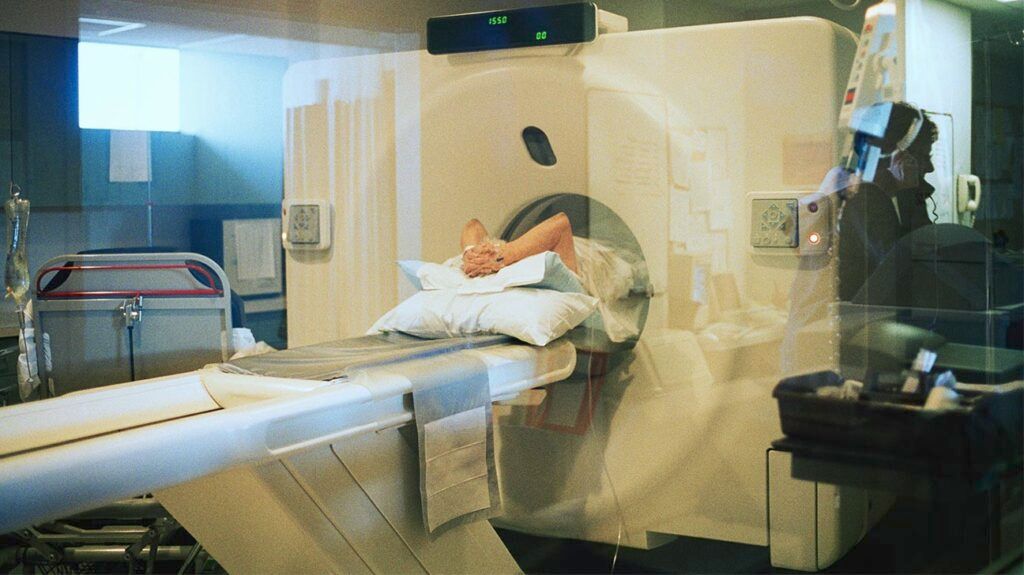Neuroendocrine tumors (NETs) are either benign or cancerous tumors that grow on a type of cell in the nervous system called neuroendocrine cells. These cells act like nerve cells but also produce hormones.
A tumor is a growth that develops when damage to a cell’s DNA causes it to copy itself excessively, forming a mass. Neuroendocrine tumors (NETs) can be either malignant, meaning they can grow and spread to other tissue, or benign, meaning they can grow but not spread.
This article discusses the types of NETs, symptoms, causes, treatment options, and more.

There are several types of NET that doctors define according to where they develop in the body. These include:
- Gastroenteropancreatic NETs (GEP NETs): GEP NETs develop in the pancreas or gut. They include gastrointestinal NETs (GI NETs) that grow in the stomach, bowel, or food pipe.
- Pulmonary NETs: These develop in the lungs. Pulmonary NETs are a rare type of lung cancer.
- NETs in other organs: In rare cases, NETs may develop in other parts of the body, such as the:
- liver
- gallbladder
- bile duct
- kidneys
- ovaries
- testicles
Classifications of neuroendocrine tumor
Doctors classify NETs as either functional or nonfunctional.
Functional NETs produce hormones. Nonfunctional NETs do not produce a biologically active hormone, and these are the
NETs can cause general cancer symptoms, such as:
- extreme tiredness
- unexplained weight loss
- appetite loss
However, other symptoms may develop depending on which organ or tissue the tumor affects. Some symptoms depend on the location of the tumor, while others occur due to the hormones that an NET can release.
Symptoms due to tumor location
These might include:
- GI NET symptoms: An NET in the digestive system can cause constipation, diarrhea, or stomach pain.
- Pulmonary NET symptoms: Lung NETs can cause wheezing or constant coughing.
- Other location-specific NET symptoms: Constant pain, thickening, or lumps in certain areas of the body may suggest a NET. Other symptoms can include:
- changes in bladder or bowel habits
- yellowing skin or eyes — jaundice
- unusual bleeding and discharge
Symptoms due to excess hormone production
In functional NETs, the tumors may make too many hormones. This
Research into the direct causes of NETs is
However, according to the U.K.’s National Health Service, people with several underlying health issues may have a higher risk of developing a NET. These include the following:
- Multiple endocrine neoplasia type 1 (MEN 1): This is an inherited condition, meaning that it passes from parents to children in the genes. It causes tumors to develop in the hormone-producing system of the body, including the pancreas, parathyroid glands, and pituitary glands.
- Neurofibromatosis type 1: This covers several genetic conditions that lead to tumor development on the nerves.
- Von Hippel-Lindau syndrome (VHL): This inherited condition causes irregular growth in blood vessels.
NETs are difficult to diagnose. According to a 2016 study, people with NETs experience an average of
To assist with reaching an accurate diagnosis, a physician will typically need to collect tissue from the tumor and send it to a lab for analysis.
A person may also require an imaging test, such as a CT scan, to check for other NETs. They may scan the following areas:
- chest
- abdomen
- pelvis
- liver
- pancreas
Doctors may also perform functional imaging. This shows excess hormone production in those with functional NETs by infusing an intravenous (IV), slightly radioactive dye that shows somatostatin receptors.
These receptors have links to hormone overproduction in NETs. The radiation appears on a scanner for the diagnostic team to track the tumor.
The type of treatment a doctor may recommend for someone with a NET depends on several factors, including:
- the location of the tumor
- the stage of the condition
- the person’s overall health
Surgery
The
If a tumor has not spread from its original site, a surgeon may remove part or all of it. This can help treat the tumor and prevent it from spreading.
Medication
Some medications destroy cancer cells throughout the body, while others target local areas. An oncologist — a doctor specializing in cancer medications — may prescribe different types of medication treatments depending on the NET, including:
- chemotherapy, which directly targets and kills cancer cells
- immunotherapy, which uses a person’s own immune system to attack cancer cells
- somatostatin analogs to control the symptoms of excess hormones from an NET
- targeted therapy, which targets tumors through their unique genes
A person’s doctor can help create a suitable treatment plan.
NETs are rare, developing in
As the exact cause of NETs is
Here are some common questions about neuroendocrine tumors (NETs).
Is a neuroendocrine tumor considered cancer?
NETs can be either cancerous or benign.
What is the survival rate for neuroendocrine tumors?
A
A doctor can provide a clearer picture of a person’s outlook based on their individual circumstances.
Neuroendocrine tumors (NETs) develop on nerves on hormone-producing cells in the nervous system. They may develop in the gut, lungs, and pancreas, as well as in other locations. Sometimes, they produce excessive hormones that have effects throughout the body. Symptoms will depend on the location of the NET.
Some genetic and inherited conditions have links to NETs, but the exact cause of this is currently unclear.
A doctor may diagnose a NET through scans and biopsies. Surgery is the main treatment, though doctors may sometimes recommend medical treatments, such as chemotherapy, immunotherapy, and targeted therapy.
